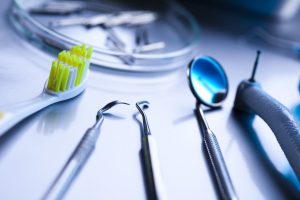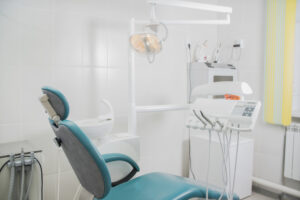One component critical to the success of a growing dental practice is taking on associate dentists. This article will discuss the different ways your dental practice can compensate associate dentists: straight salary, compensation based on production, or compensation based on collection. It is important to negotiate a compensation package that is fair both to the dental practice and the associate dentist.
Three Ways to Compensate Associate Dentists
1. Straight Salary
The simplest compensation package is straight salary, based on the number of hours or days an associate dentist works at your dental practice. To determine a fair number for the salary, you should consider, among other things, your overhead costs, fringe benefits, the cost of dental supplies, the cost of additional staff to assist the associate, additional lab costs, and how much revenue the associate dentist is likely to produce.
Nardone Limited Comment: Now, although a straight salary is simple, it does cause the practice some concerns and risks when it comes to the associate dentist’s production. As an example, what if the practice does not have a sufficient patient base to keep the associate busy, yet we have to continue paying that associate? Or, what happens if the associate simply is not productive, even though there are sufficient patients to keep that associate busy? Thus, compensation based on the associate dentist’s collection or production is another way that your dental practice could pay associate dentists. When compensation is linked to the work an associate dentist actually performs, it gives your dental practice the security of not over-paying and gives the associate dentist the ability to make more money than they would have made on a straight salary.
2. Collection-Based Compensation
Collection-based compensation is beneficial to the dental practice because the dental practice only pays the associate dentist after the practice collects money from clients or insurance companies for services performed by the associate. A collection-based arrangement encourages associate dentists to communicate clearly with clients when they discuss treatment plans. However, if you base pay on collection, your dental practice needs to be efficient at billing and collecting the correct amount from patients because your associate dentists will depend on the efficiency for their paycheck. Here is an example of a net collection definition for purposes of an employment agreement:
Net Collections: the fees generated by the Employee’s performance of Dental Services and actually received by the Practice reduced by: (i) lab fees/implant parts; (ii) patient refunds; (iii) insurance and finance charges or reductions that occur after collections; and (iv) costs related to Rework or Remakes. Any fees generated for the performance of hygiene services, or other Dental Services not actually performed by the Employee, are not included in the definition.
3. Production-Based Compensation
Production-based compensation benefits associate dentists because the associate dentist will not have to wait for insurance companies and patients to process and pay for services to receive their pay. Production-based compensation is also more predictable, because the associate dentist will be paid on a regular basis for services they perform. The dental practice, however, bears the burden for late or unpaid invoices in production-based compensation.
Structuring Compensation Based on Collection or Production
If your dental practice decides to base pay on collection or production, you must then decide how the salary will be structured. Dental practices generally structure pay based on collection or production in one of three ways: (i) a straight percentage of collection or production, (ii) a base amount plus a percentage of collection or production, or (iii) a draw based on average collection or production. A competitive percentage for pay varies by location, but is typically somewhere between 30-35{c91082aefe0e580fe546c40af534787b48cfd474f8c9ab8dac50bf49a7a1c43a}. If you offer a base plus a percentage of collection or production, you may lower the percentage of incentive relative to how much base salary you pay. On the other hand, a draw structure ensures that a dental practice never pays an associate dentist more than the dentist earns. A draw pays an associate dentist a set amount based on average collection or production, and adjusts the associate dentist’s salary according to periodical reviews of the dentist’s collection or production.
Guaranteeing Salary for New Associate Dentists
During the first three months of employment, dental practices typically compensate a new associate based on a guaranteed minimum salary or a draw on future collection or production. An associate will appreciate a dependable stream of income while they get into the swing of things at your dental practice. A guaranteed minimum salary should be just enough to cover living expenses while the associate dentist gets his practice up and running. A draw based on collection or production pays an associate out of expected future earnings.
Contact Nardone Limited
In sum, there are a variety of ways that you can compensate associate dentists. At the end of the day, it should be fair and affordable. You have to remember as business owners, and especially dental practice business owners, well-qualified associate dentists are invaluable to a practice. When a practice has a productive associate dentist as an employee, the practice can benefit significantly in terms of profitability on a yearly basis, as well as in the overall growth of the practice. Thus, to maintain and, hopefully, ensure their loyalty to the practice, an associate dentist must be properly compensated.
 Vince Nardone Discusses Employment Contracts with Ohio State Dental Students
Vince Nardone Discusses Employment Contracts with Ohio State Dental Students  Navigating the 2024 Landscape: Strategies and Considerations for Dental Support Organizations (DSOs)
Navigating the 2024 Landscape: Strategies and Considerations for Dental Support Organizations (DSOs)  Sellers of Dental Practices to DSOs need to have a Buyer’s Mentality Requiring Selectivity and a Well-Thought-Out, Decision-Making Process
Sellers of Dental Practices to DSOs need to have a Buyer’s Mentality Requiring Selectivity and a Well-Thought-Out, Decision-Making Process  Increasing Profitability by Minimizing Disruptions within Your Dental Practice
Increasing Profitability by Minimizing Disruptions within Your Dental Practice  As a Dentist, What Are My Obligations Related to Out-of-State Patients and Potential Prescription Drug Abuse?
As a Dentist, What Are My Obligations Related to Out-of-State Patients and Potential Prescription Drug Abuse?